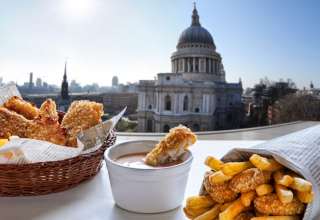Every week we’ll take a look at a different grape variety and give you the low down on what makes it special and why you should be drinking it. To kick off, we start with that King of German grapes and darling of those in the know, Riesling.

Riesling may not the most fashionable grape du jour, but ask any sommelier or wine buff what their favourite white grape is, and more often than not Riesling will the answer.
But why is Riesling less popular amongst your average wine drinkers than the cognoscenti? It would appear that Riesling has a bit of an image problem, with many wine drinkers dismissing it as sweet, cloying and German, probably confusing it with the tsunami of Liebfraumilch that Germany used to dump over here by the tanker-load back in the 1970’s and 80’s.
But over 60% of Riesling produced nowadays is of the dry variety, though the grape is highly versatile and can be used to make sweet, semi-sweet, dry and sparkling wines.
Ten years ago it was estimated that Riesling was the world’s 20th most grown variety, but for quality wines, it is usually included in the top three white wine varieties along with the more familiar Sauvignon Blanc and Chardonnay.
Riesling is traditionally grown in cool climate regions, which is why it is produced so extensively – and successfully – in Germany, which produces 60% of the world’s Riesling. Key production areas include the Mosel, Rheingau, Nahe and Pfalz wine regions.

It is also extensively grown in Alsace in France, the Clare Valley in south Australia and in Austria, the Czech Republic and New Zealand amongst others.
Riesling is usually varietelly pure (ie not blended with any other varieties) and seldom oaked.
It’s often described as having a “petrolly” aroma, particularly the aged German varieties, with an oily, viscous texture, and also displays apple and peachy note flavours.
This highly aromatic wine is considered one of the best to accompany food, and goes perfectly with a variety of dishes, depending on its sweetness and acidity.

It’s frequently matched up with spicy Thai and other oriental dishes, which can otherwise often be tricky to successfully, match with wine – one of the reasons why curry is so often washed down with a beer, rather than a glass of wine.
And for those who are trying to cut down on their alcohol consumption, the good news is that Riesling tends to pack a lighter punch on the alcohol front, typically around 11 – 12% abv.






